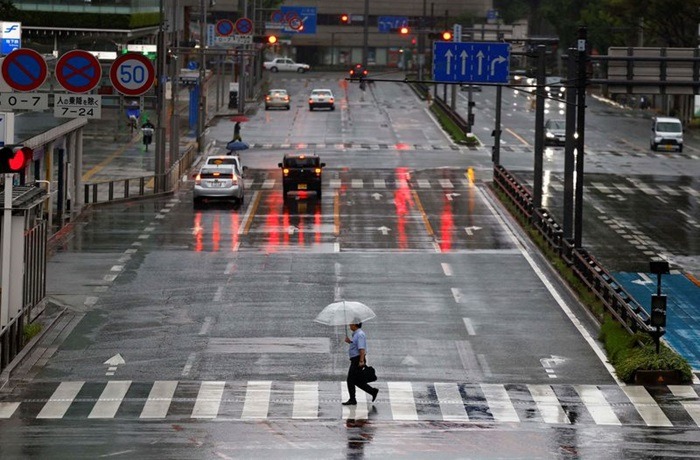FUKUOKA, Japan (Reuters) – Typhoon Shanshan has unleashed heavy rains across significant portions of Japan, prompting widespread flood and landslide warnings far from the storm’s center. The storm, which made landfall in the southwestern Kyushu region on Thursday, has led to severe travel disruptions and halted production at major factories.
In Fukuoka City, a major urban area in Kyushu, residents faced a grim situation as the storm ravaged the region. Streets remained eerily quiet and shops were closed as the typhoon’s effects took hold. University student Kokoro Osoegawa, 21, was among those stranded. She recounted her struggle to return home due to the suspension of train services: “There are no trains because of the typhoon, so my parents are coming to pick me up. I stayed at a friend’s house and then came here. I thought there would be some trains, but there are none. I’ve never experienced all the trains stopping before.”
The disaster management agency has reported at least three fatalities and 78 injuries related to the storm. Typhoon Shanshan, with wind speeds reaching up to 50 meters per second (180 km/h or 112 mph) — strong enough to overturn moving trucks — was situated near Kunisaki in Oita Prefecture at 8:45 a.m. local time (2345 GMT). The storm is moving northeast, according to meteorological authorities.
In Kyushu, approximately 125,000 households across seven prefectures were left without power, as reported by Kyushu Electric Power Co. Additionally, the typhoon’s warm, moist air has caused heavy rainfall in regions well beyond its immediate vicinity, raising concerns due to its slower-than-anticipated progression across the country.
Related topics:
How Can I Pay Less for Transport in London
How Can I Go to Oxford from London
Can I Travel to London in January

